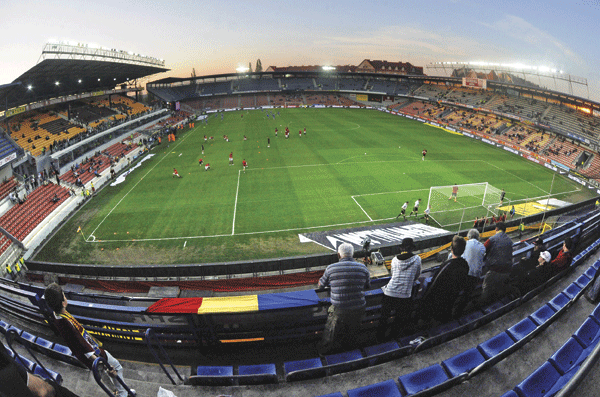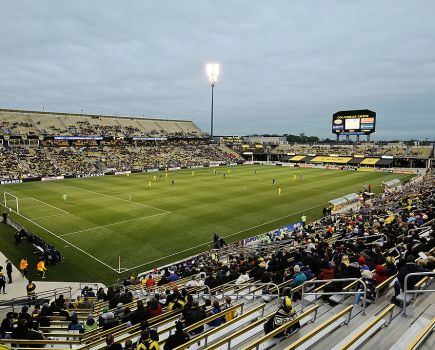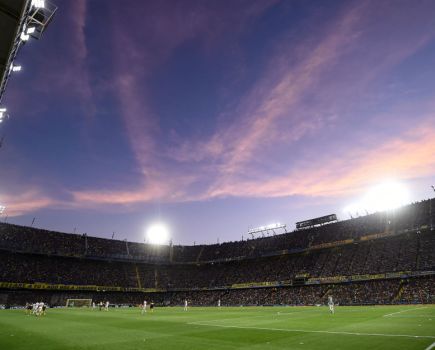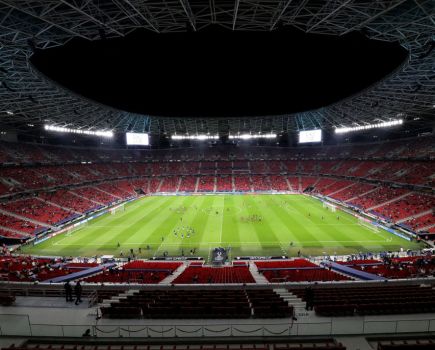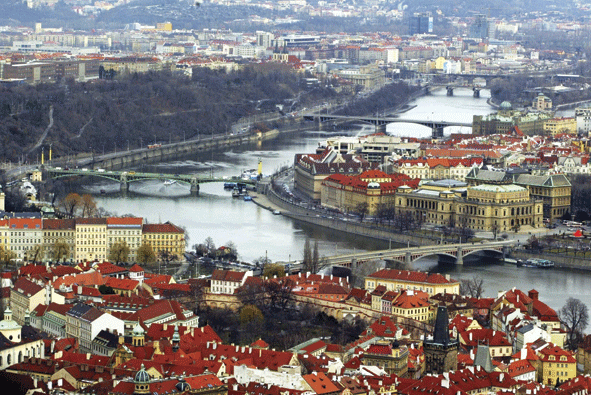 The “Derby S”, between Sparta and Slavia, has been played since March 1896, when a 0-0 draw at the King’s Meadow was watched by just 121 paying customers.
The “Derby S”, between Sparta and Slavia, has been played since March 1896, when a 0-0 draw at the King’s Meadow was watched by just 121 paying customers.
And 115 years later, Sparta are still the team to beat. They are the country’s best supported team and are backed by the wealth of the entrepreneurial Rezes family, which allows them to nurture and purchase the best talent.
In the pre-war era, Sparta’s support was working-class; then, under post-war Communist rule, the club found favour with the authorities, who viewed Slavia’s intellectuals with suspicion.
Slavia were stripped of their name, their star players and the 1948 autumn title, which is still disputed to this day. In May 1996, as their 1934 World Cup goalkeeping hero Frantisek Planicka lay dying in bed, Slavia took their first title for 50 years on an emotional afternoon.
Games between the eternal rivals do not take place in the kind of hostility you might see in Glasgow or Rome, with fans blowing traditional three-cornered horns, known as “tralalak”. Czech attendances are quite low and despite the amount of beer available – and drunk – many games are usually low-key.
It’s also possible to combine a weekend trip to see Sparta or Slavia with a game at one of the city’s other teams: Dukla Prague, Viktoria Zizkov and Bohemians 1904.
Groundhopping
Dukla: Stadion Juliska
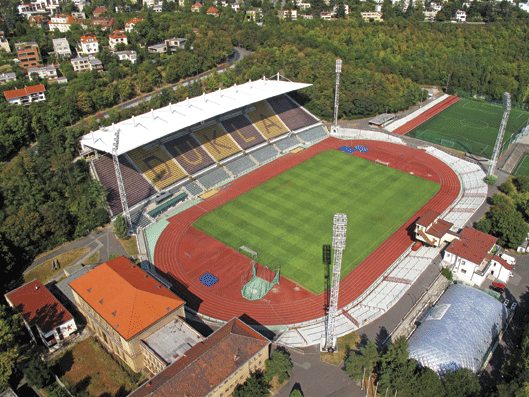 Dukla’s home ground, with its running track, open terracing and one main stand, once held a lot more than its current 2,000 capacity. Tickets are priced at 70 and 100 crowns. Click here for details. Trams 2 and 8, and buses 131 and 515 pass nearby. The Dejvicka stop, a terminus on the green A metro line, is quite a trek.
Dukla’s home ground, with its running track, open terracing and one main stand, once held a lot more than its current 2,000 capacity. Tickets are priced at 70 and 100 crowns. Click here for details. Trams 2 and 8, and buses 131 and 515 pass nearby. The Dejvicka stop, a terminus on the green A metro line, is quite a trek.
Dukla’s return
A cult name thanks to indie band Half Man Half Biscuit, Dukla Prague returned to the top flight this season. Once a major force, the Czech Army side fell from grace in the 1990s and were playing in front of three-figure crowds when entrepreneur Bohumir Duricko bought the Dukla name.
His new club, who became FC Dukla, Dukla Pribram, FK Marila Pribram and now 1FK Pribram today play at the Na Litavce ground in Pribram and have been in the Czech top-flight since 2007.
But football was still being played at the old Dukla’s Juliska stadium. Home to a local side called Dukla Dejvice, who wore Dukla’s yellow and red strip, the club took over ailing second-division Jakubcovice in 2007, were re-named Dukla Prague and gained promotion this year.
Sparta: Generali Arena
Sparta’s is the finest club ground in the Czech Republic and the nearest Prague has to a national stadium. Known as the Letna, it is modern and compact, with a capacity of 21,000.
Its traditional name stems from the surrounding parkland that stretches around it. This area has been used by Sparta since the club’s foundation in the 1890s. The ground was rebuilt in 1994 when local architect Kyril Mandel designed four neat, enclosed stands.
Either take green metro line A to Hradcanska, then walk for 10 minutes along Milady Horakove, or red metro line A to Vlatavska, and approach the stadium from the opposite direction along Milady Horakove, a longer journey.
Match tickets are available from FootballMania (Perlova 1020/I in Prague 1) or Nike Prague (Slovansky dom, Na Prikope 859/22) near Wenceslas Square. You’ll also find two ticket offices
at the ground. Home fans gather behind the south goal, with away fans diagonally opposite.
Strahov: Evzena Rosickeho Stadium
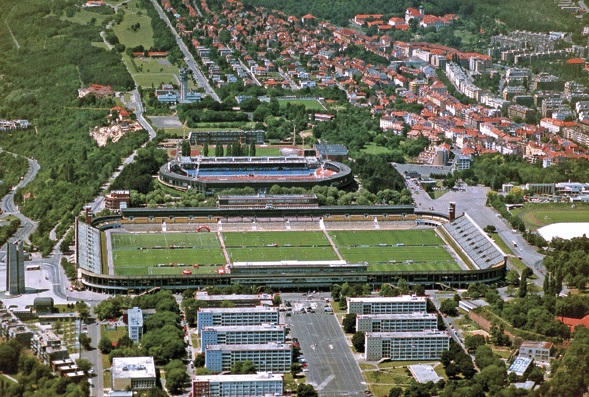 The sprawling Strahov stadium once held more than 200,000 people at communist rallies
The sprawling Strahov stadium once held more than 200,000 people at communist rallies
but now hosts rock concerts and is the perennial subject of redevelopment talk. The complex acts as Sparta’s training ground and the club’s B team play Czech second-tier matches at the adjacent Evzena Rosickeho stadium – where Slavia played on a temporary basis in the 1980s, and from 2000 to 2008. More recently, Bohemians, the club formerly known as FC Strizkov, played there.
Zizkov: FK Viktoria Stadion
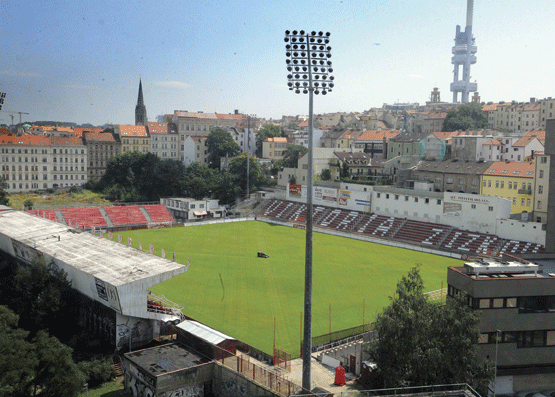 After success between the wars, Viktoria Zizkov re-emerged with a post-1989 cash injection and created a few surprises in Europe. After a financial scandal saw the red-and-whites relegated, they bounced back up in May. The 5,600-capacity stadium is in the working-class district of Zizkov in Prague 3, on Seifertova trida near Husinecka tram stop on the 5, 9 and 26 lines.
After success between the wars, Viktoria Zizkov re-emerged with a post-1989 cash injection and created a few surprises in Europe. After a financial scandal saw the red-and-whites relegated, they bounced back up in May. The 5,600-capacity stadium is in the working-class district of Zizkov in Prague 3, on Seifertova trida near Husinecka tram stop on the 5, 9 and 26 lines.
Bohemians: Dolicek
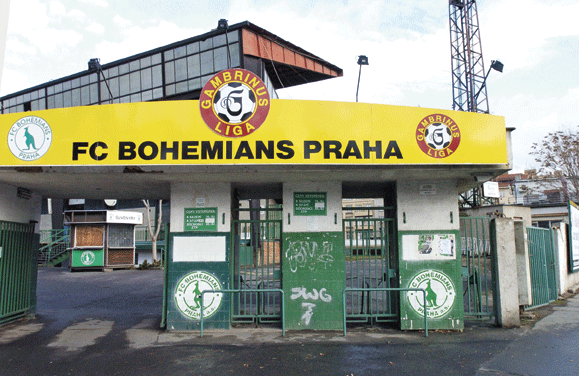 The original home of Bohemians 1905, who now play at Slavia’s Synot Tip Arena because Dolicek does not meet the league’s safety criteria.
The original home of Bohemians 1905, who now play at Slavia’s Synot Tip Arena because Dolicek does not meet the league’s safety criteria.
Tale of two Bohemians
Bohemians 1905 were revived by their own fans after being relegated from the top flight in 2005. After a financial crisis saw the club demoted to the third tier, the club’s name was sold to FC Strizkov, who took the name Bohemians Praha. Bohemians 1905 regained their top-flight status
in 2007. The other Bohemians were relegated in 2010 and now play in the Czech second tier.
Slavia: Synot Tip Arena
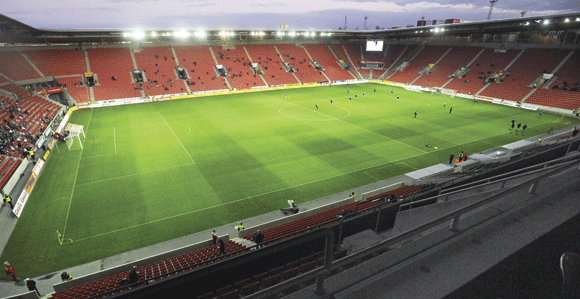 Slavia play at the state-of-the-art 21,000-capacity stadium, which opened on the site of the creaking Eden ground in 2008, and is named after its betting-company sponsors. The stadium, which will host the 2013 European Super Cup, can be reached by tramlines 4, 7 and 22. Bohemians 1905 also play their home games here.
Slavia play at the state-of-the-art 21,000-capacity stadium, which opened on the site of the creaking Eden ground in 2008, and is named after its betting-company sponsors. The stadium, which will host the 2013 European Super Cup, can be reached by tramlines 4, 7 and 22. Bohemians 1905 also play their home games here.
Diary Dates
The first “S Derby” of the new season takes place on September 24, when Sparta host Slavia
at the Generali Arena. The day before, Dukla play host to their old stablemates 1FK Pribram, formerly Dukla Pribram. Then, to make it three Prague games in three days, Bohemians 1905 are home to Slovan Liberec on September 25.

